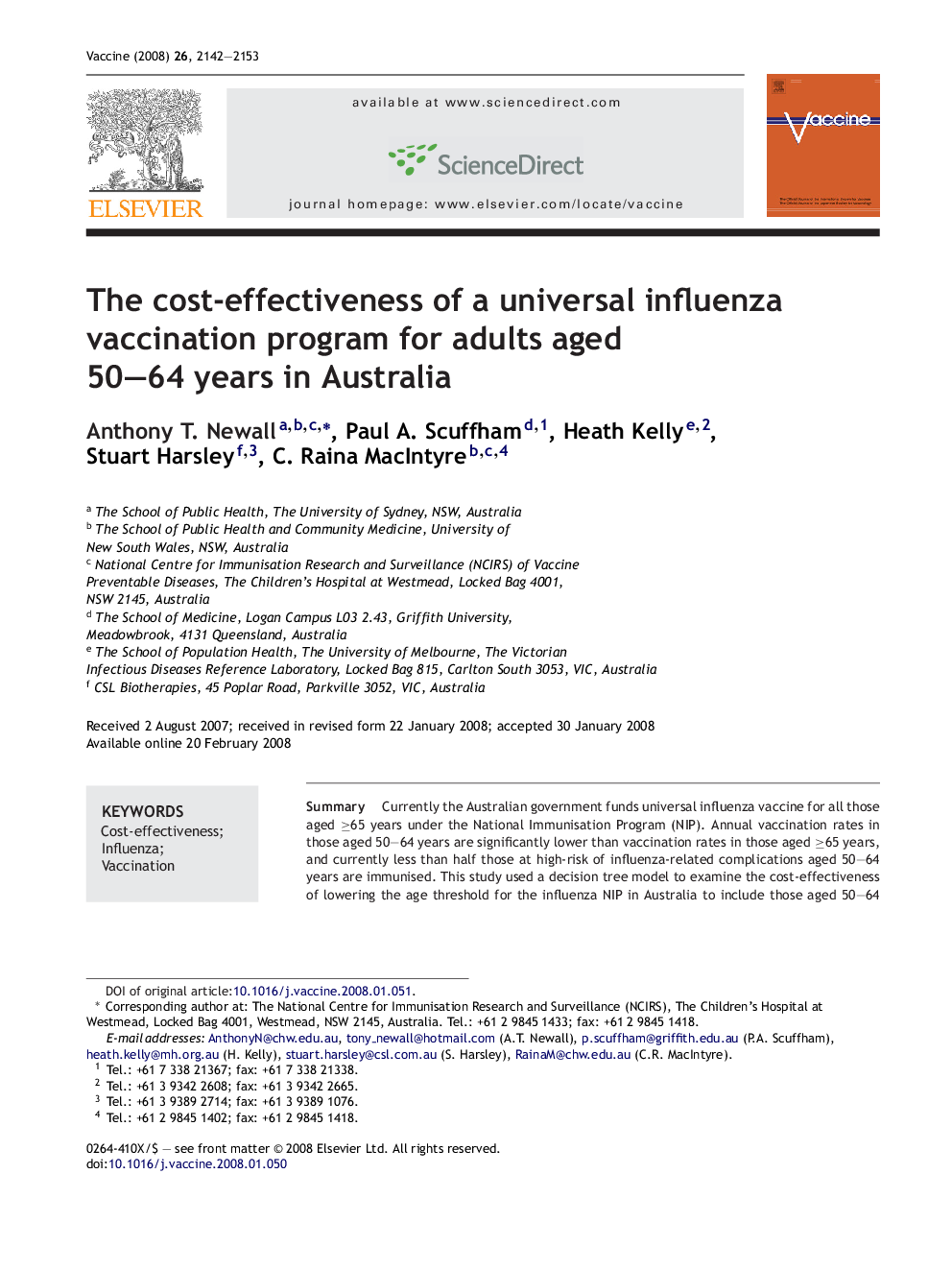| Article ID | Journal | Published Year | Pages | File Type |
|---|---|---|---|---|
| 2406626 | Vaccine | 2008 | 12 Pages |
SummaryCurrently the Australian government funds universal influenza vaccine for all those aged ≥65 years under the National Immunisation Program (NIP). Annual vaccination rates in those aged 50–64 years are significantly lower than vaccination rates in those aged ≥65 years, and currently less than half those at high-risk of influenza-related complications aged 50–64 years are immunised. This study used a decision tree model to examine the cost-effectiveness of lowering the age threshold for the influenza NIP in Australia to include those aged 50–64 years. From a healthcare payer perspective, a new influenza vaccination policy would cost $8908/QALY gained. From a societal perspective, a new influenza vaccination policy would cost $8338/QALY gained. From a governmental perspective, a new influenza vaccination policy would cost $22,408/QALY gained. The most influential parameters in deterministic sensitivity analysis included: probability of death due to influenza, vaccine efficacy against mortality, vaccine uptake, vaccine cost, and vaccine administration cost. Influenza vaccination for people aged 50–64 years appears highly cost-effective, and should be a strong candidate for funding under the NIP.
